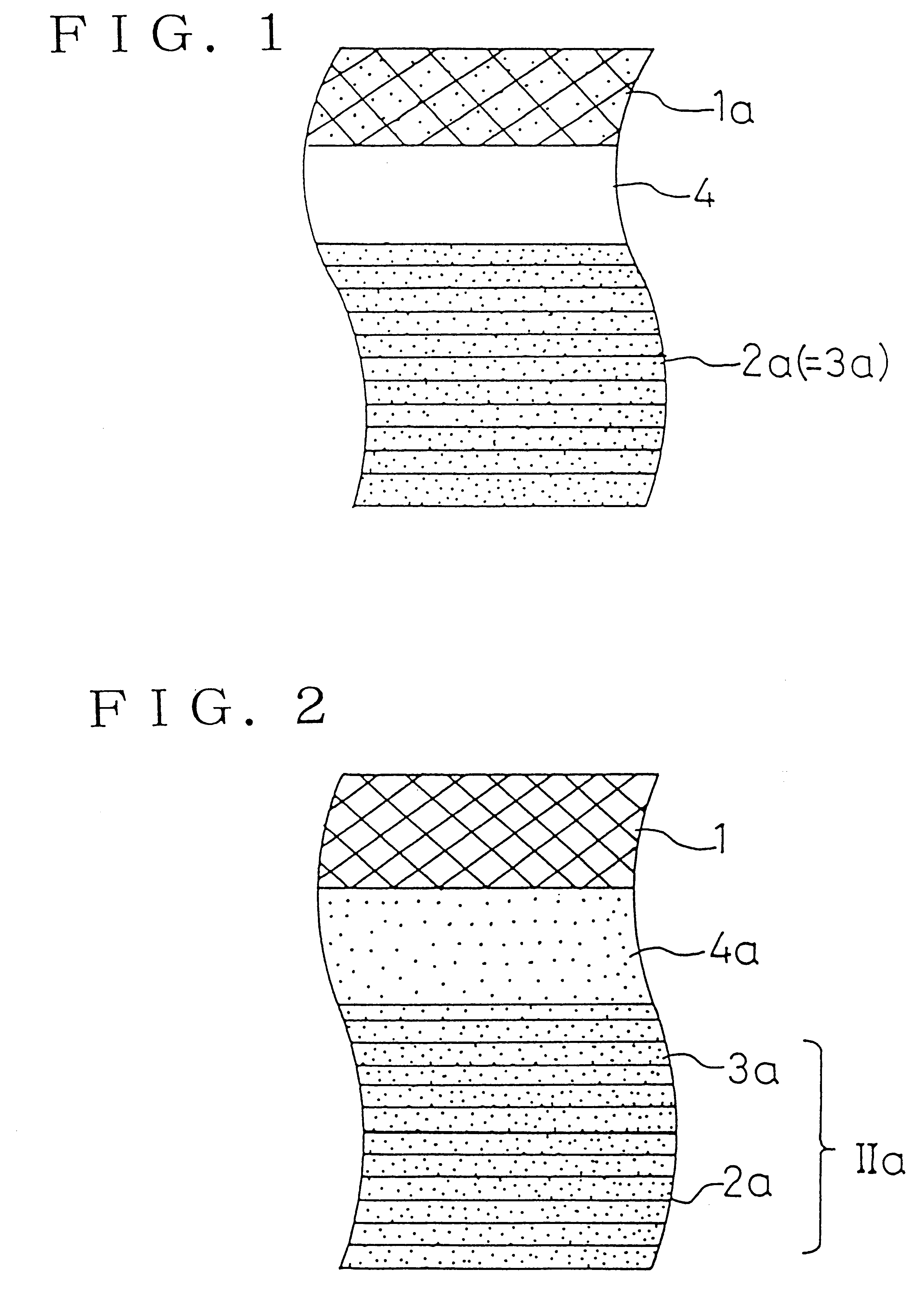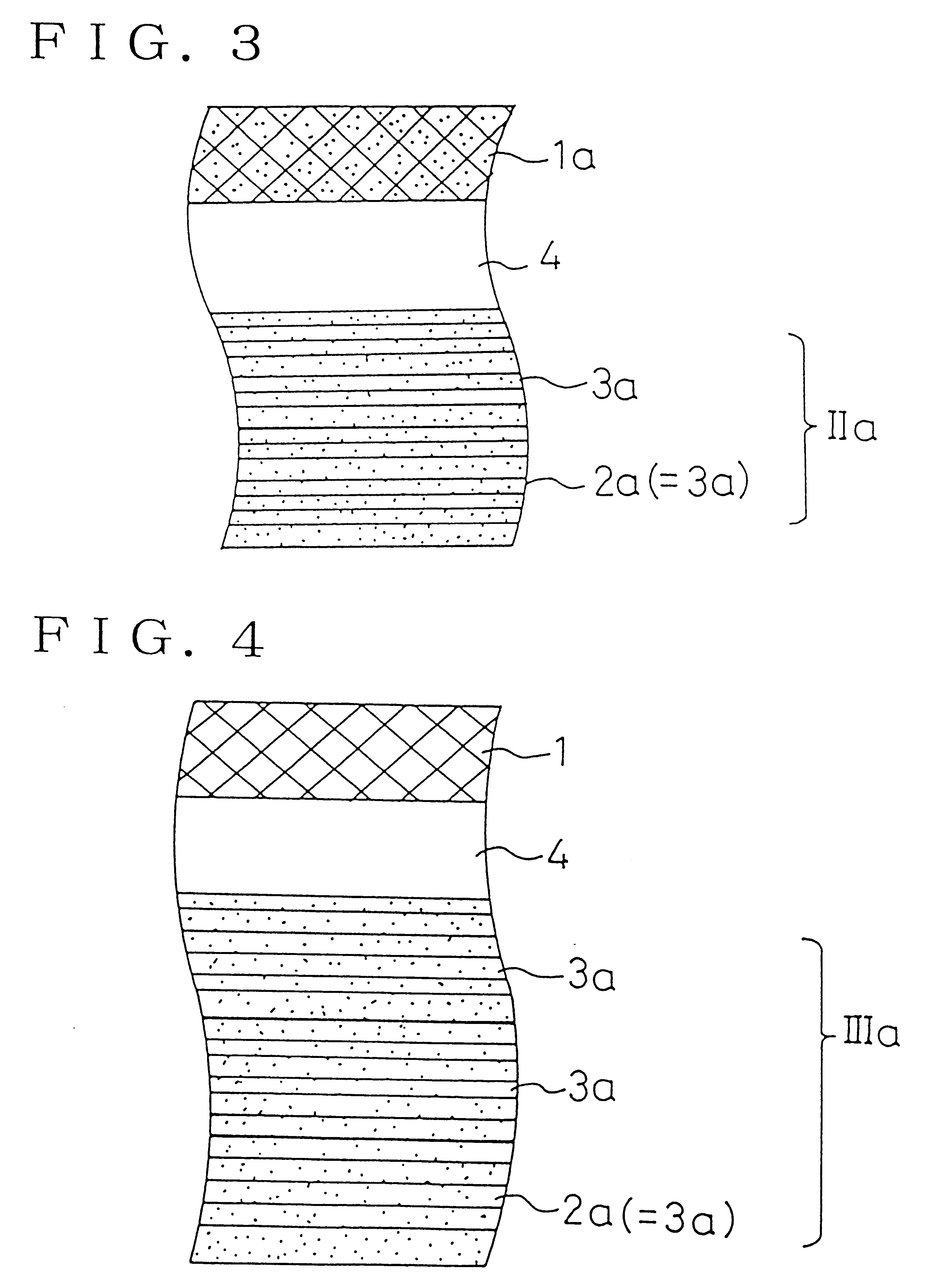Package easy-to-open for photosensitive material
a technology of photosensitive materials and packaging, which is applied in the field of packaging easy-to-open for photosensitive materials, can solve the problems of difficult to maintain optimal tight sealing and light-shielding properties, the kokoku jp-b-2-2700 is the kokoku jp-b-2-2701 is again not optimum in easy-to-open performance, so as to improve the amenability to heat sealing and photographic performan
- Summary
- Abstract
- Description
- Claims
- Application Information
AI Technical Summary
Benefits of technology
Problems solved by technology
Method used
Image
Examples
example 1
The present Example is directed to a package easy-to-open for photosensitive material having a photosensitive material enclosed in a gazette bag of FIG. 10 employing the completely light-shielding layered film of the layered structure shown in FIG. 4. The biaxially stretched plastic film layer in FIG. 4 is a biaxially stretched polyethylene naphthalate resin film layer 20 .mu.m in thickness (content of polyethylene glycol, 0.3%).
The characteristics of the biaxially stretched polyethylene naphthalate resin film layer 20 .mu.m in thickness, employed in the present embodiment, are as follows:
tensile strength by JIS K7127 is 31 kgf / mm.sup.2 (304 MPa) and 33 kgf / mm.sup.2 (304 MPa) for MD and for TD, respectively;
tensile elastic modulus by JIS K7127 is 570 kgf / mm.sup.2 (5586 MPa) and 590 kgf / mm.sup.2 (5782 MPa) for MD and for TD, respectively;
tearing propagation resistance by JIS K7128 (Elemendorf) is 8 gf / 25 .mu.m (0.08 N / 25 .mu.m) and 11 gf / 25 .mu.m (0.1 N / 25 .mu.m) for MD and for TD, a...
example 2
The Example 2 is directed to a packaged material of a band-shaped photosensitive material of FIG. 14 employing the layered film having the layered structure shown in FIG. 8. The biaxially stretched plastic film layer 1 and the adhesive layer 4 of FIG. 8 are the same as those of Example 1. Moreover, the three-layer co-extruded film layer IIIa is the same as to the resin composition and the molding method as that in Example 1 except varying the thickness of each layer 3a, 3a, 3a thereof from 25 .mu.m each to 15 .mu.m each. The resulting packaged material is free from curling, while being optimum in procuring complete light shielding properties and complete hermetic sealing performance since it is made of the biaxially stretched polyethylene naphthalate resin film layer having a large Young's modulus in the central part. The packaged material had other characteristics superior similarly to those of the Example 1.
example 3
A biaxially stretched polystyrene resin film layer, 25 .mu.m in thickness, having a tensile strength of 10 kgf / mm.sup.2 (98 MPa), a tensile elastic modulus of 120 kgf / mm.sup.2 (1176 MPa), a tearing propagation resistance of 3 gf / 25 .mu.m (0.03 N / 25 nm), an explosion strength of 1 kg, thermal contraction (100.degree. C..times.1 minute) of 20%, water vapor transmission of 30 g / m.sup.2.multidot.24 hours and an oxygen transmission rate of 1300 cc / m.sup.2.multidot.24 hours.multidot.atm, was used in place of the biaxially stretched polyethylene naphthalate resin film layer of 20 .mu.m thickness of the biaxially stretched plastic film layer 1 of Example 2, with the other conditions being the same as those of Example 2. The resulting product exhibits poor barrier characteristics with respect to water vapor or oxygen as compared to those of the biaxially stretched polyethylene naphthalate resin film and inferior physical strength and thermal resistance. However, the product was still within ...
PUM
| Property | Measurement | Unit |
|---|---|---|
| density | aaaaa | aaaaa |
| density | aaaaa | aaaaa |
| density | aaaaa | aaaaa |
Abstract
Description
Claims
Application Information
 Login to View More
Login to View More - R&D
- Intellectual Property
- Life Sciences
- Materials
- Tech Scout
- Unparalleled Data Quality
- Higher Quality Content
- 60% Fewer Hallucinations
Browse by: Latest US Patents, China's latest patents, Technical Efficacy Thesaurus, Application Domain, Technology Topic, Popular Technical Reports.
© 2025 PatSnap. All rights reserved.Legal|Privacy policy|Modern Slavery Act Transparency Statement|Sitemap|About US| Contact US: help@patsnap.com



